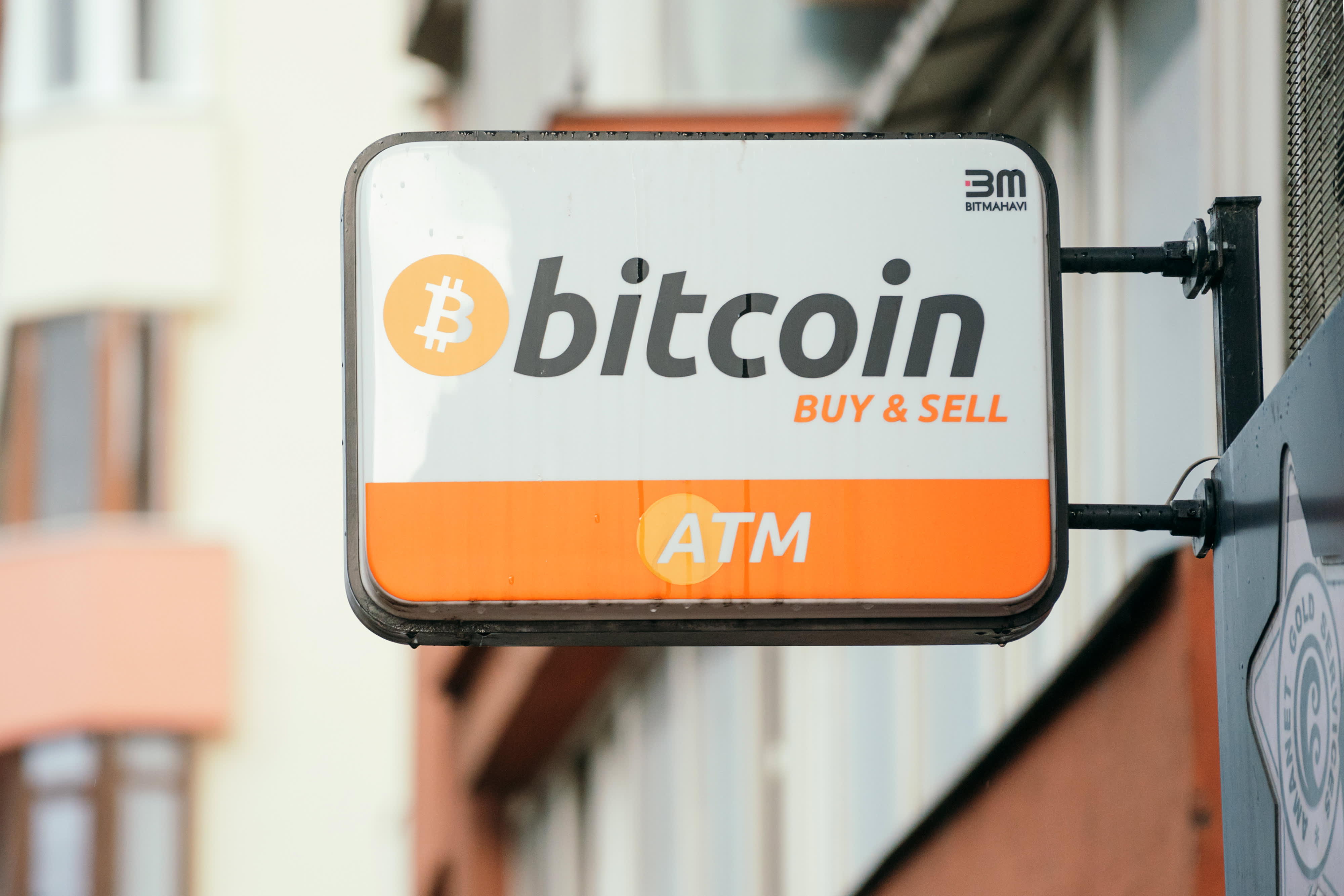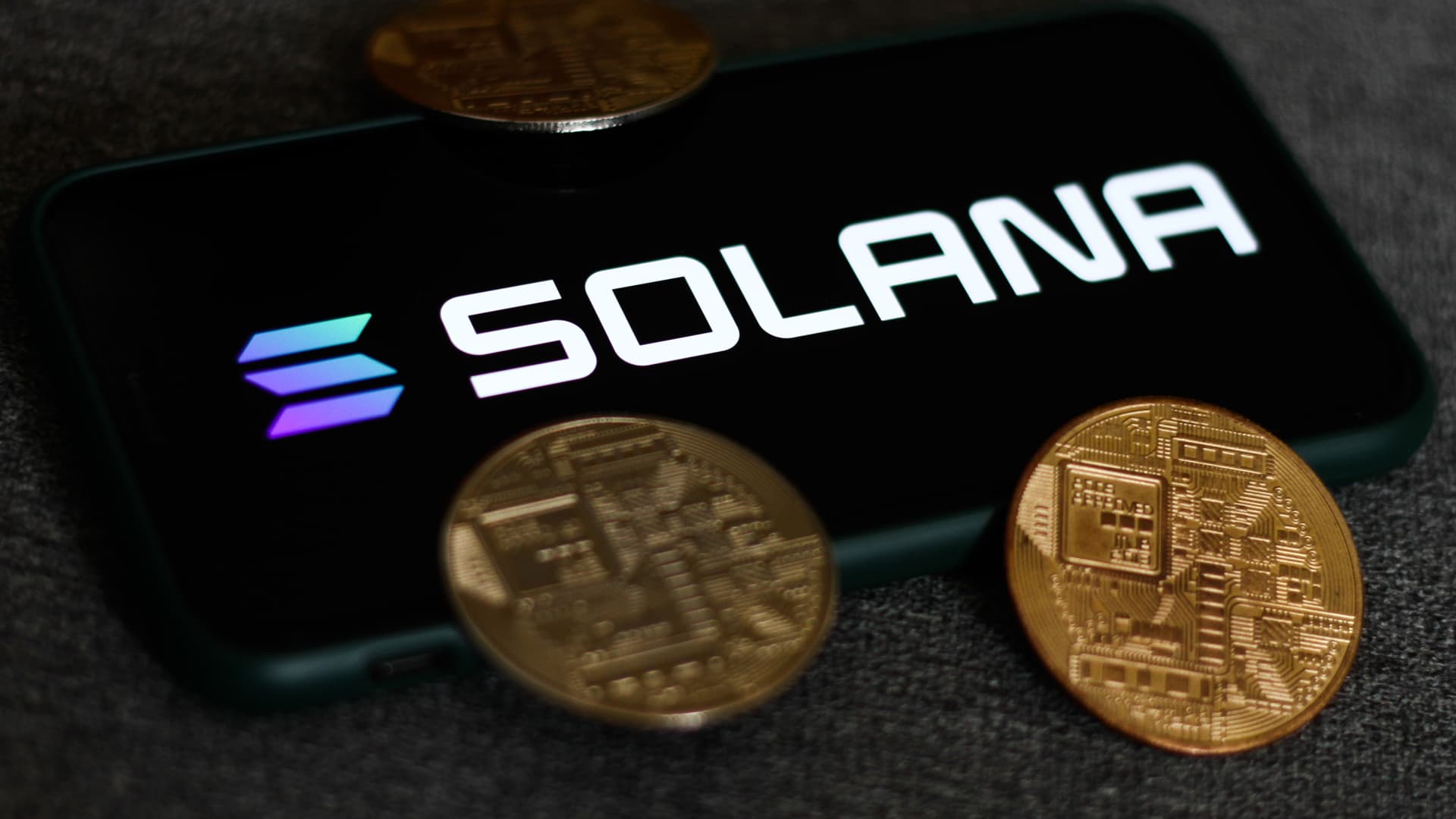Products You May Like
Solana was touted as the cryptocurrency that would challenge ether with an eco-friendlier approach, faster transaction speeds and more consistent costs.
Investors who made that bet had a miserable year. The token’s market cap collapsed from over $55 billion in January to barely above $3 billion at year-end.
related investing news




Among Solana’s biggest problems in late 2022 was its close relationship to FTX founder Sam Bankman-Fried, who faces eight criminal fraud charges after his crypto exchange went bankrupt last month. The disgraced former crypto billionaire was one of Solana’s most public boosters, touting the advantages of the blockchain technology and investing over a half-billion dollars in Solana tokens.
“Sell me all you want,” Bankman-Fried told one skeptic in January 2021. “Then go f— off.”
Bankman-Fried’s companies held nearly $1.2 billion worth of the token and associated assets in June, according to documents reviewed by CoinDesk.
When FTX fell apart, investors bailed on Solana to the tune of about $8 billion. But in recent days, as the rest of the crypto world has been relatively quiet and prices stable, Solana has plummeted further.
Two of the biggest non-fungible token (NFT) projects built on Solana announced their migration off of Solana’s platform on Christmas Day. But the recent slides came after that news had already broken, making Solana’s recent slide something of a mystery.
In the last week, Solana has declined over 30%. Ether has held steady, shedding 1.7% in the same time period, while bitcoin has only dropped 1.2%. Among the 20 most-valuable cryptocurrencies tracked by CoinMarketCap, the next biggest loser over that stretch is Dogecoin, which has fallen 9%.
In just one hour of trading on Thursday, Solana slid 5.8%, bringing it to the lowest since early 2021, around the time that Bankman-Fried began to vocally offer his support for the project.
Solana has since come off the lows, with a market cap now crossing $3.5 billion. Its 24-hour trading volume is up over 200% on a relative basis.
During the crypto market’s heyday in 2021, Bankman-Fried was hardly alone in his bullishness.
Developers raved about Solana’s support for smart contracts, pieces of code that execute pre-programmed directives, as well as an innovative proof-of-history consensus mechanism.
Consensus mechanisms are how blockchain platforms assess the validity of an executed transaction, tracking who owns what and how well the system is working based on a consensus between multiple record-keeping computers called nodes.
Bitcoin uses a proof-of-work mechanism. Ethereum and rival Solana use proof-of-stake. Rather than relying on energy-intensive mining, proof-of-stake systems ask big users to offer up collateral, or stake, to become “validators.” Instead of solving for a cryptographic hash, as with bitcoin, proof-of-work validators verify transaction activity and maintain the blockchain’s “books,” in exchange for a proportional cut of transaction fees.
Solana’s supposed differentiating factor was augmenting proof-of-stake with proof-of-history — the ability to prove that a transaction happened at a particular moment.
Solana soared over the course of 2021, with a single token gaining 12,000% for the year and reaching $250 by November. Yet even before the collapse of FTX, Solana faced a series of public struggles, which challenged the protocol’s claim that it was a superior technology.
Much of Solana’s popularity was built around growing interest in NFTs. Serum, another exchange backed by Bankman-Fried, was built on Solana. When the calendar turned to 2022, Solana’s limitations started to become apparent.
Barely a month into the year, a network outage took Solana down for over 24 hours. Solana’s token fell from $141 to a low of a little over $94. In May, Solana experienced a seven-hour-long outage after NFT minting flooded validators and crashed the network.
A “record-breaking four million transactions [per second]” took out Solana and caused the price of its token to drop 7%, CoinTelegraph reported at the time, pushing it further into the red during the bruising onset of crypto winter.
In June, another outage prompted a 12% drop. The hours of downtime came after validators stopped processing blocks, immobilizing Solana’s touted consensus mechanism and forcing a restart of the network.
The outages were concerning enough for a protocol that sought to upend ether’s dominance and assert itself as a stable, rapid platform. Solana was experiencing growing pains in public. The project was first built in 2020 and is a younger protocol than ether, which went live in 2015.
Technology challenges are to be expected. Unfortunately for Solana, something else was brewing in the Bahamas.
The SEC called it “brazen” fraud. Bankman-Fried’s use of customer money at FTX to fund everything from trading and lending at his hedge fund, Alameda Research, to his lavish lifestyle in the Caribbean roiled the crypto markets. Bankman-Fried was released on a $250 million bond last week while he awaits trial for fraud and other criminal charges in the Southern District of New York.
Solana lost more than 70% in total value in the weeks following FTX’s November bankruptcy filing. Investors fled from anything associated with Bankman-Fried, with prices for FTT (FTX’s native token), Solana, and Serum plunging dramatically.
Solana founder Anatoly Yakovenko told Bloomberg that rather than focusing on price action, the public should remain focused on “having people build something awesome that’s decentralized.”
Yakovenko did not immediately respond to CNBC’s request for comment.
FTT has fared the worst, losing practically all its value. But Solana has seen a continued flight in recent days, reflecting ongoing concerns about FTX contagion and skepticism about the long-term viability of its own protocol.
Developer flight is the most pressing concern. Solana’s raison d’etre was to solve bitcoin and ether’s struggle “to scale beyond 15 transactions per second worldwide,” according to developer documentation. But active developers on the platform have dropped to 67 from an October 2021 high of 159, according to Token Terminal.
Multicoin Capital, a cryptocurrency investment firm, has maintained a bullish stance on Solana. Even after the implosion of FTX, Multicoin continued to strike an optimistic tone about the suddenly beleaguered blockchain.
“We recognized that SOL was likely to underperform in the near term given the affiliation with SBF
and FTX; however, since the crisis began we’ve decided to hold the position based on a variety of factors,” Multicoin wrote in a message to partners obtained by CNBC.
Multicoin, and other prominent crypto voices, maintain that the fallout from FTX underscores the need for a return to basics for the crypto industry: A transition away from juggernaut centralized exchanges in favor of decentralized finance (DeFi) and self-custody.
An uptick in daily activity at now peerless Binance might suggest that many crypto enthusiasts have yet to take that missive to heart.
It’s unsurprising that Yakovenko continues to believe in Solana. Yet even Vitalik Buterin, the man behind ethereum, voiced his support for Solana on Thursday. “Hard for me to tell from outside, but I hope the community gets its fair chance to thrive,” Buterin wrote on Twitter.
Chris Burniske, a partner at a Web3 venture capital firm Placeholder, said he was “still longing” Solana in a Dec. 29 Twitter thread.
Crypto saw mass adoption thanks to centralized platforms like FTX, Crypto.com, and Binance. FTX splashed millions of dollars on stadium deals and naming rights. Crypto.com invested heavily in prominent ad campaigns. Even Binance announced a sponsorship tie-in with the Grammys.
2023 may prove a seminal year for defi, as crypto-curious investors look for safer ways to garner returns and custody their assets. Bitcoin was born out of the 2008 financial crisis. Now the cryptocurrency industry faces a test of its own.
“Lehman was not the end of the banking industry. Enron was not the end of the energy industry.
And FTX won’t be the end of the crypto industry,” Multicoin told investors.
– CNBC’s Ari Levy and MacKenzie Sigalos contributed to this report.
